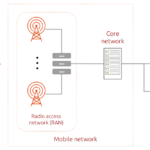In a recent study conducted by Omdia and Canonical, it has been revealed that network cloudification is of utmost importance, highlighting the increasing adoption of open-source technologies by communications service providers (CSPs) in the US, UK, and Germany. The report titled “Cloud-native network transformation and the 5G edge” underscores the shift in perspective among CSPs who now perceive networked edge computing not only as a strategic imperative but also as a lucrative prospect set to yield returns in the near term. This evolving mindset is influenced by the pressing need to unlock the full capabilities of 5G networks, a challenge that CSPs are currently approaching with renewed confidence and enthusiasm.
Transitioning Towards Optimism: CSP Perception of 5G Edge Computing
Previously characterized by hesitancy due to the absence of a definitive catalyst driving the expansion of 5G networked edge computing, CSPs have witnessed a significant transformation in their outlook. The report indicates a notable shift propelled in part by the surge in interest surrounding AI-driven applications. Remarkably, a staggering 86% of CSPs now exhibit positive sentiments towards the prospects of edge computing within telecommunications networks. This newfound optimism is translated into proactive measures as CSPs intensify their endeavors to embrace a cloud-native approach, positioning themselves to seamlessly integrate advanced networked edge computing solutions. The survey shows that 90% of CSPs without existing commercial edge computing implementations are geared towards completing their deployment within the next two years.
Anticipated Timeline for Full Deployment of Edge Computing by CSPs
Unveiling the Valuable Opportunity of Networked Edge Technologies
The forecasted revenue potential from edge computing resonates strongly with stakeholders, with almost all respondents foreseeing the generation of either moderate (60%) or substantial (39%) new income streams from this segment. The allure of edge computing lies in its ability to optimize workloads for enhanced latency and bandwidth efficiencies when closely integrated with network functionalities. Furthermore, the deployment of applications in proximity to end-users or within their premises serves to cater to privacy, control, and performance requisites. This convergence of optimism, demand assurance, and growth projections, coupled with the expansion strategies concerning edge infrastructures, is projected to catalyze significant market expansion. Omdia predicts a sharp uptick in networked edge adoption in the coming years, opening up a lucrative opportunity exceeding $26 billion encompassing Infrastructure as a Service (IaaS) and Software as a Service (SaaS) by the year 2032.
Graph depicting Networked Edge Servers Installation Base and Associated IaaS + SaaS Revenue Trends between 2022 and 2032
Enabling Progress Through Cloud-Native Technologies
Recognizing the indispensable role of network cloudification in seizing the edge computing potential, CSPs are diligently focusing on enhancing cloud infrastructures across various network domains encompassing core, Radio Access Network (RAN), and transport. According to Kerem Arsal, Senior Principal Analyst at Omdia, “The research underscores the substantial evolution and maturation that networked edge computing is poised to undergo. CSPs acknowledge that network cloudification stands as a pivotal enabler for capitalizing on the opportunities presented by edge computing. The imperative to adopt a cloud-native approach is underscored by the myriad benefits it offers from both technical and operational standpoints.”
Overcoming Challenges: Technical Hurdles and Interoperability Concerns
Despite the promising outlook, CSPs continue to grapple with impediments impeding the realization of edge computing benefits. The research spotlights technical complexities, particularly the clash between legacy systems and cloud infrastructure, as the primary obstacle hindering the deployment of edge applications. Furthermore, the lack of progress in crucial areas such as virtualized RAN (vRAN), 5G core, and containerization pose significant challenges related to network readiness for edge computing. Addressing these challenges necessitates a concerted effort towards enhancing interoperability through network cloudification.
Cédric Gégout, VP of Product at Canonical, emphasizes the pivotal role of cloud-native technologies in surmounting these obstacles stating, “Cloud-native transformation extends beyond networked edge computing; it involves leveraging platforms like Kubernetes, LXD, and OpenStack to unify diverse systems. When paired with the interoperability benefits offered by open-source components such as Ceph and OVN, CSPs can automate and orchestrate various operational aspects, facilitating seamless deployment and optimization processes. Through the adoption of cloud-native technologies, CSPs can enhance network flexibility, enabling rapid rollout of innovative services like AI-driven management and real-time analytics, thereby boosting operational efficiency and ensuring competitive readiness in the burgeoning networked edge computing landscape.”
Envisioning the shift towards cloud-native architectures as a strategic imperative rather than a mere technological advancement is crucial for CSPs. Such a transition holds the promise of delivering enhanced customer experiences, unlocking novel revenue streams, and surmounting persistent operational challenges.
To delve deeper into the intricacies of the benefits and challenges driving networked edge computing, explore the comprehensive report available for reference.











